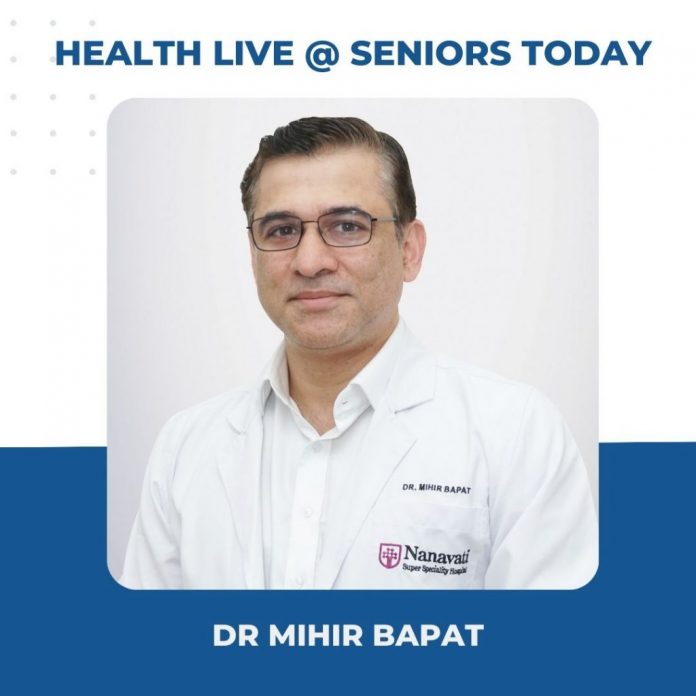On 2 October 2021, Seniors Today hosted yet another very interesting Health Live webinar. Our guest was Dr Mihir Bapat of Nanavati Max Hospital and he addressed Spine Care for Senior Citizens.
Dr Mihir Bapat is the Director of the Nanavati Max Institute of Spine Surgery, Mumbai, and a leading spine surgeon with over 23 years of experience. He specialises in minimally invasive spine surgery, degenerative spine, fractures, tumours and deformities. He is the recipient of several global and Indian awards.
Dr Bapat is a postgraduate teacher for the Mumbai University, the Diplomate National Board and the Asia Pacific AO Spine. He has several international publications, more than a hundred citations and international presentations.
Pain is our brain’s way of telling us to stop and intervene. Backaches and pains can be due to a multitude of reasons and might not present until it is too late. And even when it does, we tend to ignore it. That is something you should not do.
A very common misconception in pertinence to spine is that anything that shows up on an MRI is a slip disc, which is not always the case; a slip disc is a complication. Normally, by the age of 35, the MRI looks normal but post 35 certain changes which are called degenerative changes, spondylosis or spondylitis are seen. Which means the strength of the disc, or the cushions around the spine are weakening. This is completely different from when the disc has moved from its position or has narrowed down with age; these conditions are very different from spondylosis which is primarily due to age, hence a degenerative change and will only keep progressing as time goes by.
Age related nerve narrowing is when as the age progresses, there is narrowing of the disc which pinches the nerve as a result
Slip disc is when the disc tends to jump out of position and it pinches the nerve.
As you grow old, certain activities and exercises will get restricted, some of the include- sitting on the floor, sitting cross legged, bending work, kneeling, stooping; all these activities are going to get more difficult to perform with time and one should not find ways around it or even find it unusual.
Some individuals complain that when they get up, they are in a tilted position. This tilt can be attributed to a muscle spasm which is one of the most common injuries that you can come across while performing common and day to day activities. This can be extremely painful for the first 3-5 days.
There is no single solution to back pain.
The number one cause for back pain as you age is your weight. Body weight plays a significant role in your body posture. If you’re overweight, you tend to get a hump and as you keep bending forward, the strain on your muscles is going to keep increasing and so is the pain.
Lazy postures, when you’re sitting on the computer or while sitting on the sofa tend to affect your muscles, since this increases the load on your muscles. Always sit correctly and keep taking constant breaks from your sitting position. Do not sit on a work desk or in the same position for any longer than 40 minutes. Every 40 minutes, take a break for 2 minutes, relax your muscles and get back to your work after that and keep repeating it every 40 minutes.
A pillow should keep your neck in line with your shoulders. So, too thin or too thick a pillow is not good. Your pillow needs to be customised keeping the size of your shoulders in mind.
Sleeping on the floor is not a good idea when you have back pain. Changing cushions or surfaces is never good for your muscles since your muscles are used to a particular sleeping posture. However, your mattress should maintain your body alignment.
Avoid waking up and exercising right away. Give your muscles sometime to adjust.
Whenever your back pain is associated with pain radiating to the thighs or your legs, it needs to be further investigated since that means that your nerves are being irritated. The best and safest investigation in such a case is an MRI. And MRI will give you and your treating physician information which will help decide the further course of action.
Light jogging is a very smooth, rhythmic and repetitive exercise. A 30 minute light jog is not just good for your back but also for your knees. Also, jogging will have more impact on the knee than the back. Hence the knees are of more concern here.








